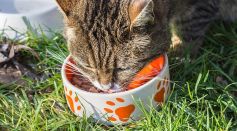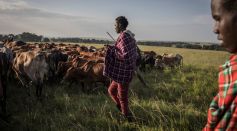ENVIRONMENT & CLIMATE
Protect Your Dogs From This Tick-Borne Disease Now; Here's How
Seaweed-Eating Crabs Could Help Save Threatened Coral Reefs
Philippine Pangolins Spotted, Researcher Suggest It’s Not Too Late to Save Them
Scientists Finally Discovered Why Wombats Poo Are Cube-Shaped

Lab-Grown Meat for Pets? Experts Explain How
Glacial Retreat Increases Risks of Alpine Plant Extinction

Study Shows Factors Affecting Americans’ Level of Concern Over Climate Change
Naked Mole Rats Can Speak Distinctive Dialects

World's Smallest Reptile Discoverd in Madagascar
Study Suggests Thumbs Helped Evolution Two Million Years Ago
Meet Simba: Singapore's First Artificially Conceived Lion Cub
Scientists Uncover the Mystery Behind the Massive Craters in Siberia

Scientists Reveal Humans Were Drinking Milk Before They Could Even Digest It
Abandoned Oil Rigs Repurposed to Help the Planet Heal
Most Popular

Can the World Run Out of Water? Water Scarcity Science and Climate Impact Explained

Solar Maximum 2026: Inside the Sunspot Cycle and Solar Activity Forecast Astronomers Are Watching

Volcanic Warning Signs: How Magma Movement Reveals Eruption Prediction Clues for Geologists

Could Technology Prevent Natural Disasters? How Disaster Prediction and Early Warning Systems Could Save Lives




